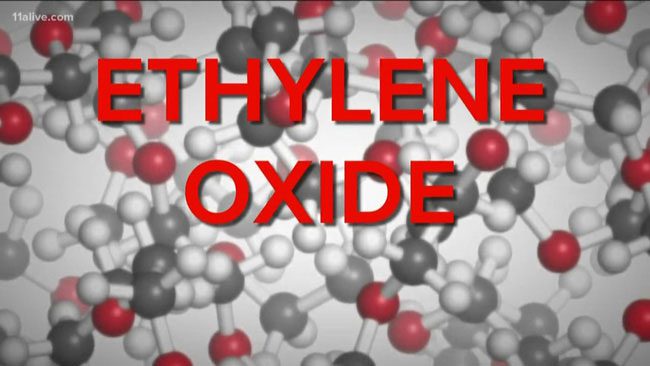Ethylene Oxide (EO) has the chemical formula C2H4O and is widely used as a sterilizing agent for medical equipment, healthcare tools, pharmaceuticals, and veterinary applications. Some processed foods also contain this chemical to prevent mold and spoilage.
Is Ethylene Oxide Dangerous?
Due to its ability to destroy DNA, ethylene oxide is commonly used as an effective disinfectant. However, this also poses a potential risk of cancer and genetic mutations with frequent exposure. Numerous health concerns regarding ethylene oxide have led the U.S. Food and Drug Administration and European authorities to issue various recommendations regarding this substance.
How is Ethylene Oxide Used?
Ethylene oxide is also known by other names such as: Alkene Oxide, Dimethylene Oxide, EO, ETO, Oxane, Dihydroxirene, Oxacyclopropane, Oxirane.
Ethylene oxide gas (also referred to as EO or EtO) is widely used as a sterilizing agent for medical equipment, healthcare tools, pharmaceuticals, and veterinary applications.

EO is used for disinfection and long-term storage preservation.
With its ability to destroy DNA, ethylene oxide is commonly used as an effective disinfectant. However, this also poses a potential risk of cancer and genetic mutations with frequent exposure. Due to various health concerns regarding ethylene oxide, the U.S. Food and Drug Administration and European authorities have issued several recommendations about this substance.
Ethylene oxide (EO) has good permeability, allowing it to penetrate materials such as paper, plastic, and fabric. Additionally, this gas can effectively eliminate almost all viruses, bacteria, and fungi, preventing them from reproducing, making it highly favored for disinfection and for preserving items that need long-term storage without the worry of mold.
EO is also used in the production of household chemicals. In industry, it is primarily used to make ethylene glycol—a substance used as an antifreeze—and polyester.
A small amount of ethylene oxide is used in insecticide formulations.
Ethylene oxide is also a component in textiles, detergents, solvents, and adhesives.
Some countries allow the use of ethylene oxide for pest control in certain agricultural products and for food disinfection.
How Do Humans Come into Contact with EO?
Ethylene oxide is a common substance found in many consumer and industrial products. Therefore, humans can primarily come into contact with EO through the air (inhalation) and through food and beverages.
Additionally, direct exposure to EO gas can occur for workers who handle this gas.
People may also be exposed to EO by inhaling tobacco smoke or using products that have been sterilized with EO, such as medical supplies, cosmetics, and food (from processed foods, long-term preserved items, and products with uncontrolled pesticide or chemical residues).
When is EO Potentially Carcinogenic?
EO is classified by the European Chemicals Agency (ECHA) as a mutagen, carcinogen, and reproductive toxicant. There is no established safe level of exposure to EO that can be considered risk-free for human health.
Consumption of food containing EO does not pose an acute health risk but may increase the likelihood of health issues if consumed in significant amounts over a prolonged period.
Acute Poisoning Causes Local Reactions
Workers inhaling high concentrations of EO may experience acute reactions such as nausea, vomiting, neurological disorders, bronchitis, pulmonary edema, and emphysema.
Direct contact with EO solution on the skin or eyes can cause irritation.
Studies involving acute exposure in animals show that EO has high acute toxicity when inhaled.
Chronic Poisoning Can Cause Various Diseases
The California Environmental Protection Agency (CalEPA) has established a chronic respiratory exposure level of 0.03 mg/m3 for EO based on its effects on the nervous system in rodents. The CalEPA reference exposure level is a concentration that is equal to or lower than the level where adverse health effects are unlikely to occur. It is not a direct risk estimation tool but serves as a reference point for assessing potential impacts. As lifetime exposure levels increase beyond the reference exposure level, the likelihood of adverse health effects rises.
Accordingly, the minimum risk level for inhalation (MRL) is averaged at 0.2 mg/m3. MRL is an estimate of human daily exposure to a toxic substance that may not present cancer risk but can have significant adverse health effects over a specific exposure duration. The exposure period for an intermediate MRL is from several weeks to a year.
If exposed to EO over several years (such as workers in EO environments), in addition to cancer, chronic health issues caused by EO may include: irritation of the eyes, skin, and respiratory tract, as well as neurological effects (e.g., chronic headaches, nausea, memory loss, numbness).
Various reproductive effects have been noted in studies on respiratory exposure in animals, including reduced implantation sites, decreased testicular weight and sperm concentration, and testicular degeneration.


















































